Nevada woman has new reason for hope on MIA/POW Day

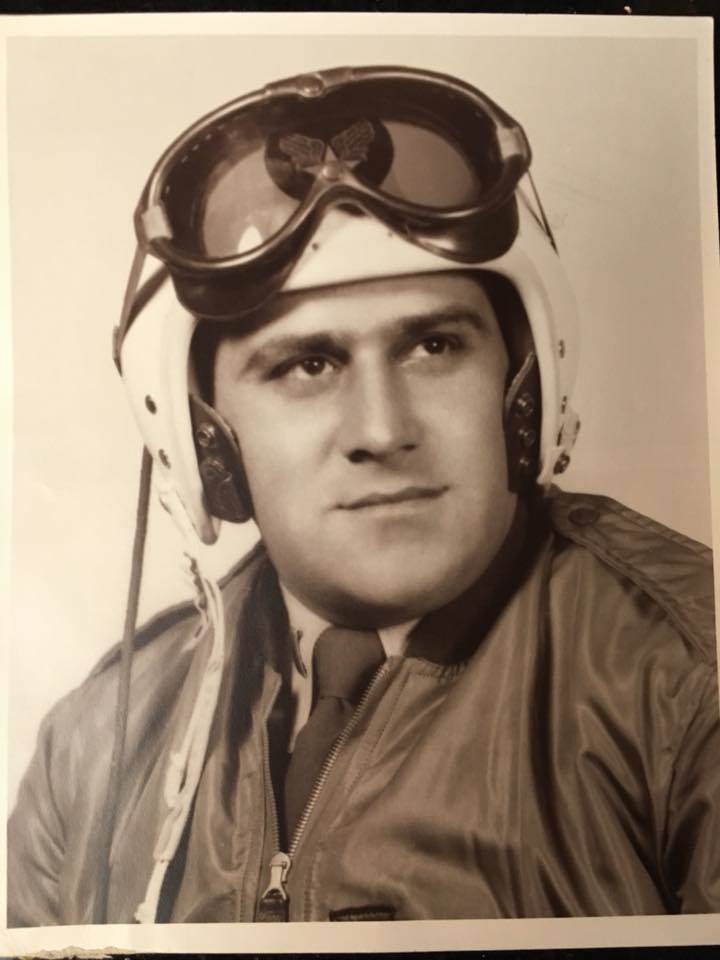
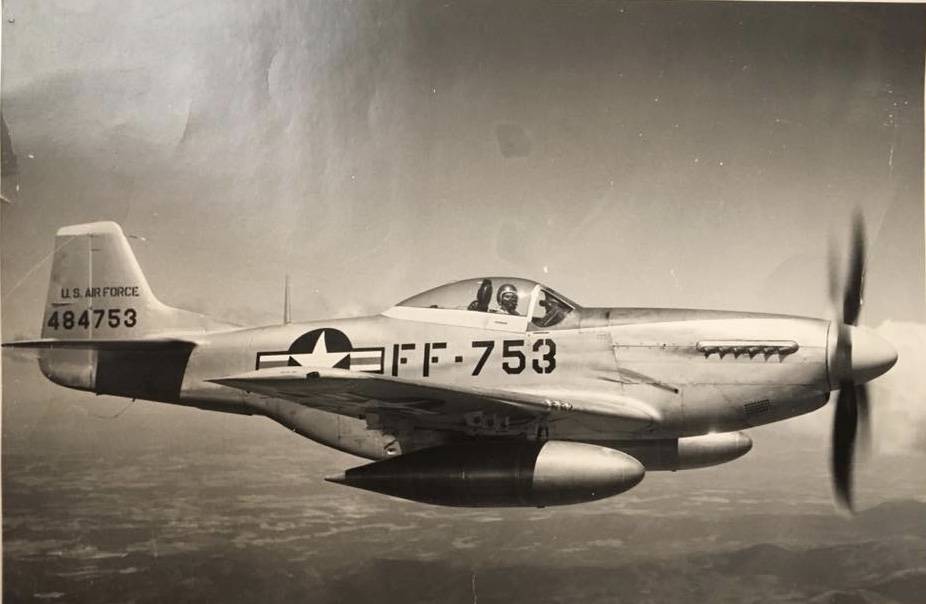
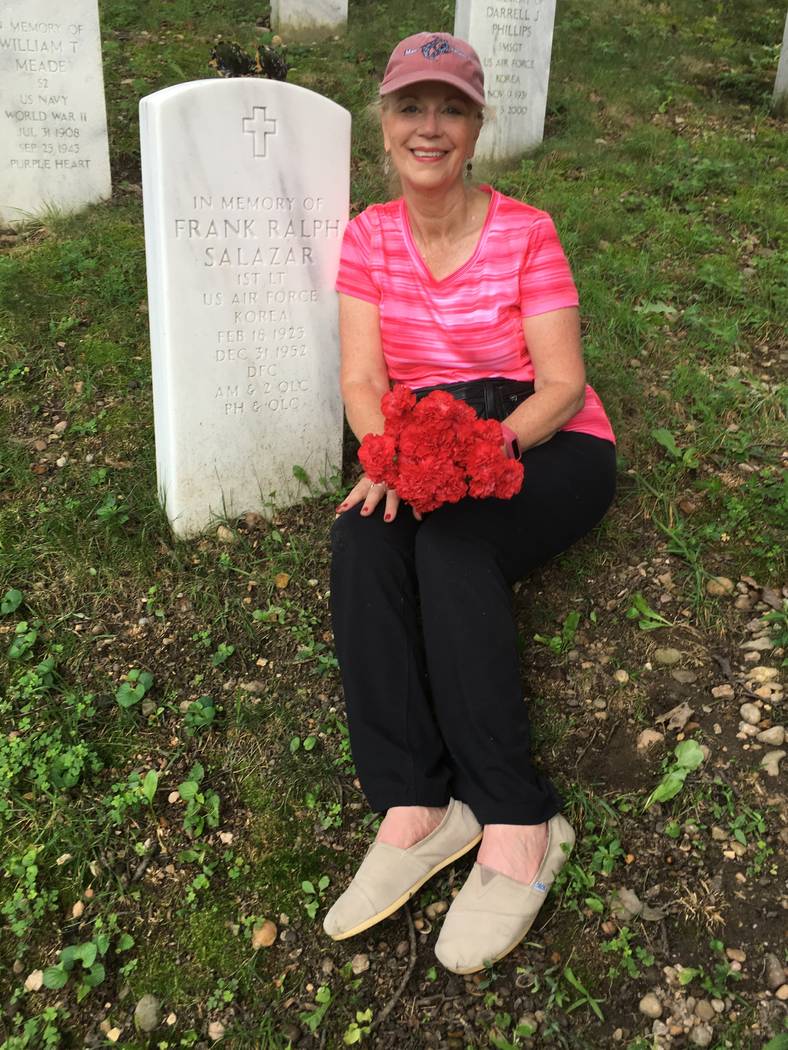
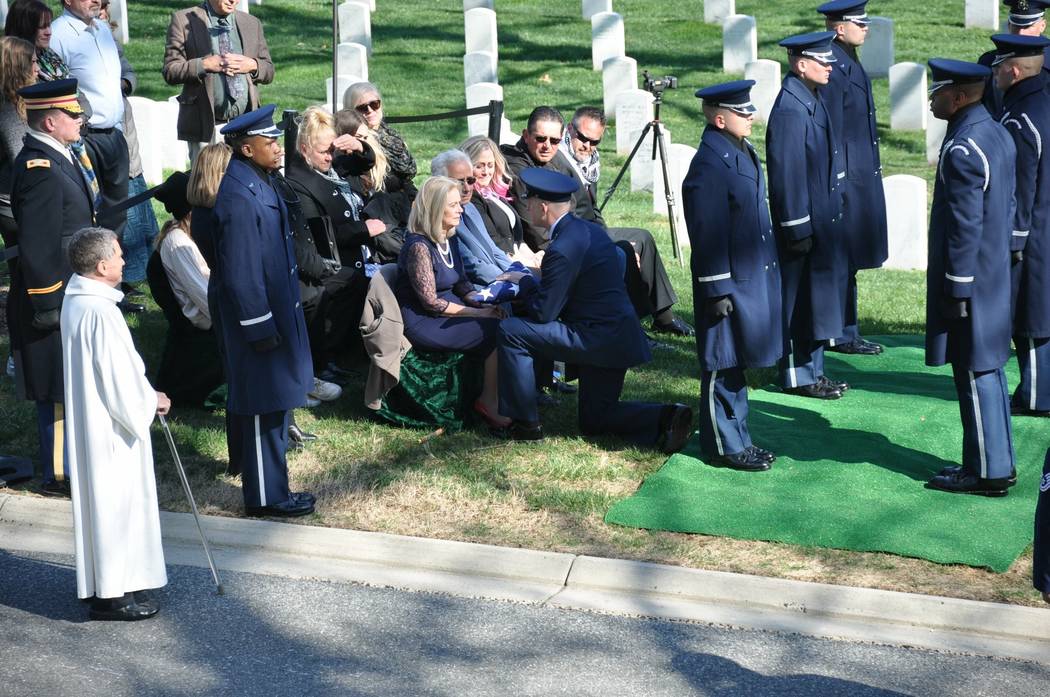
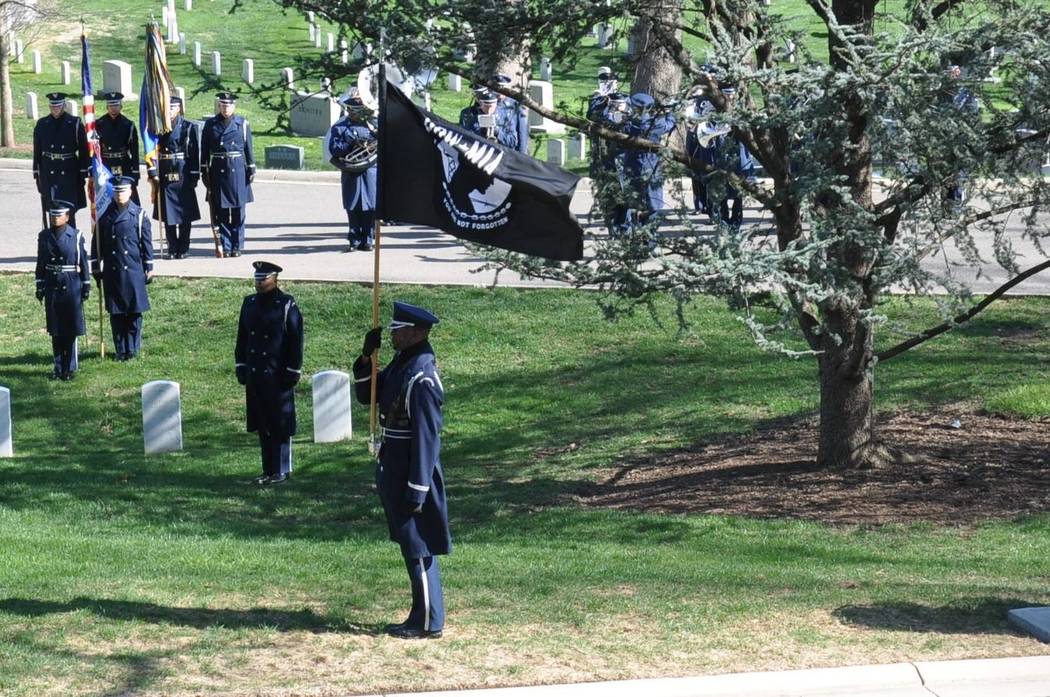
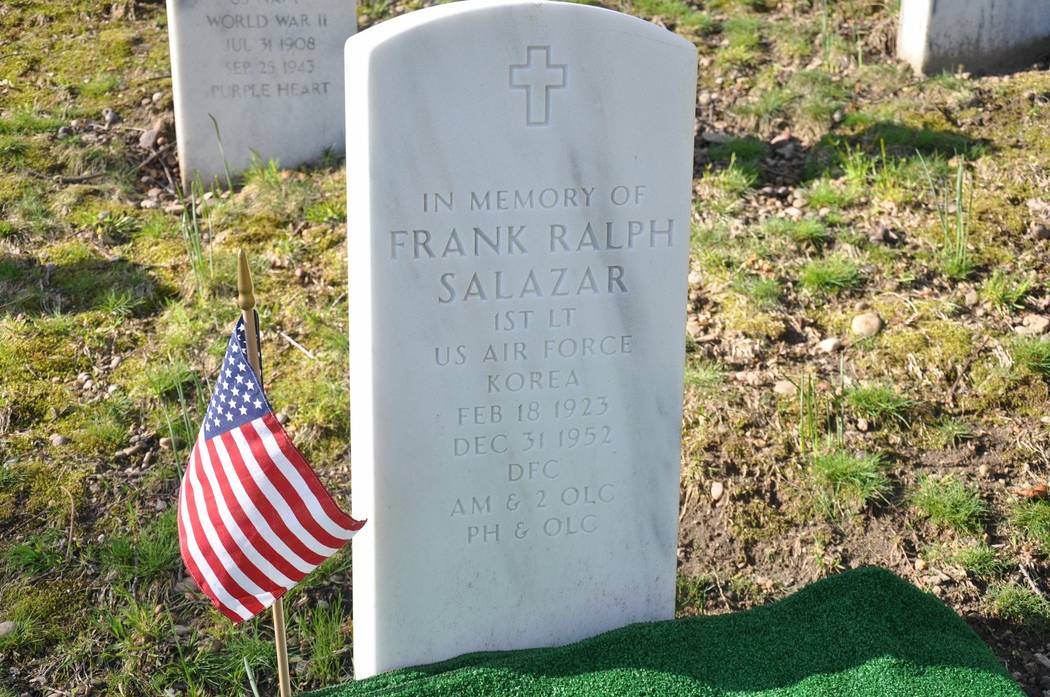

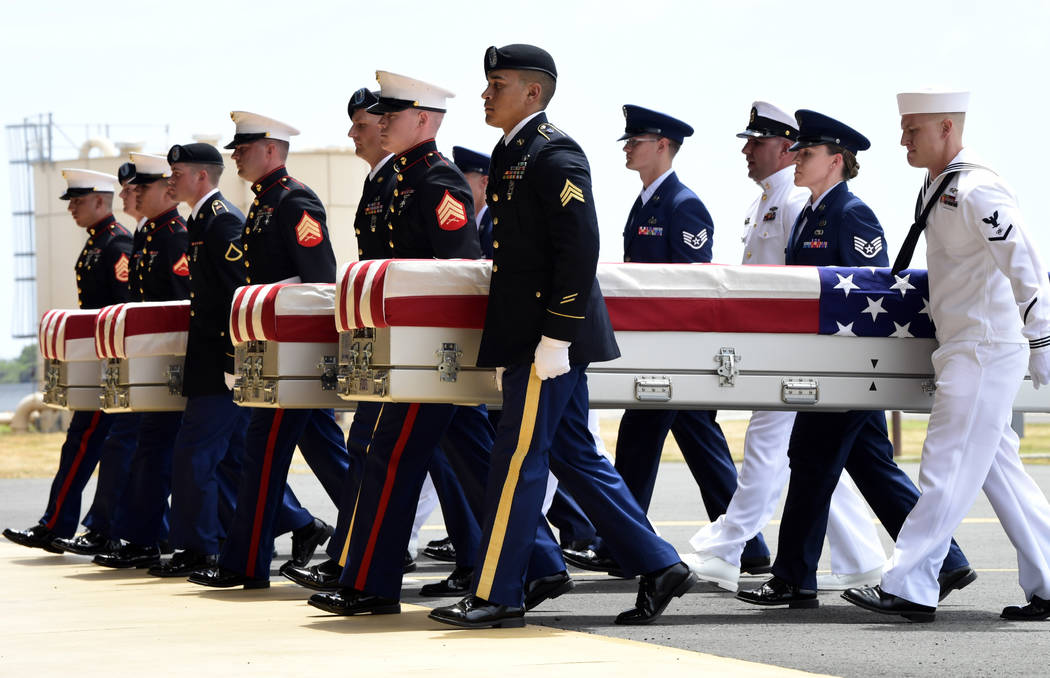
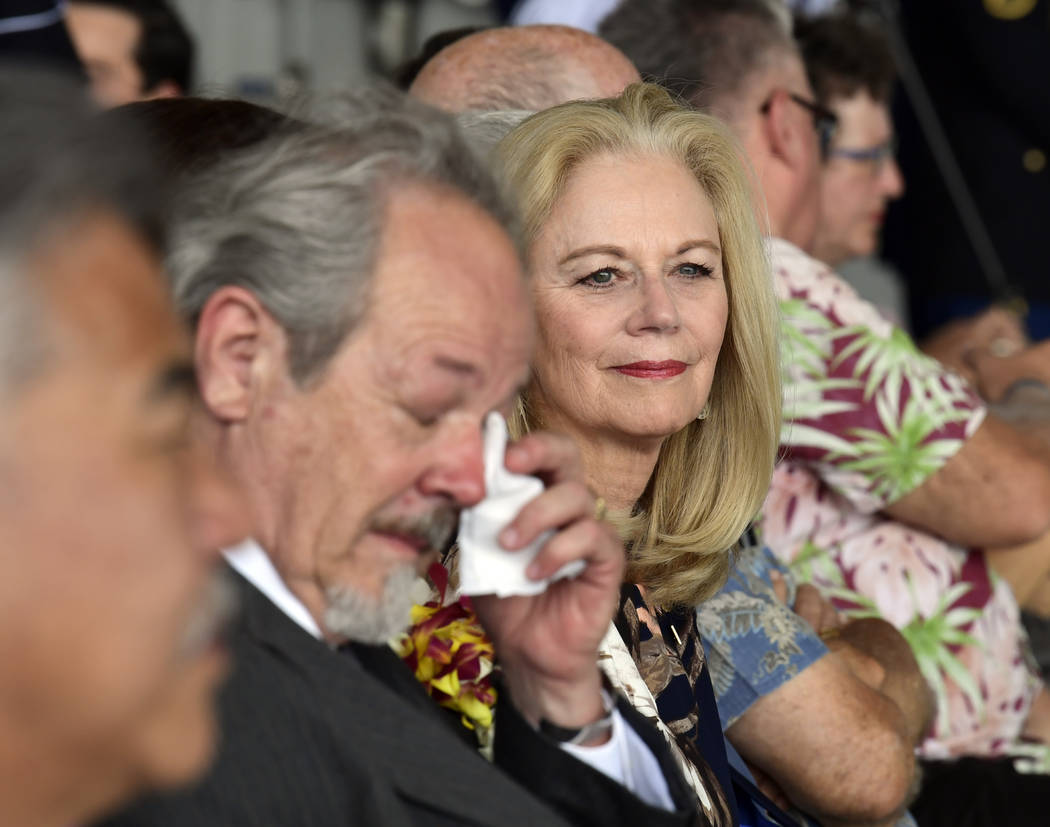


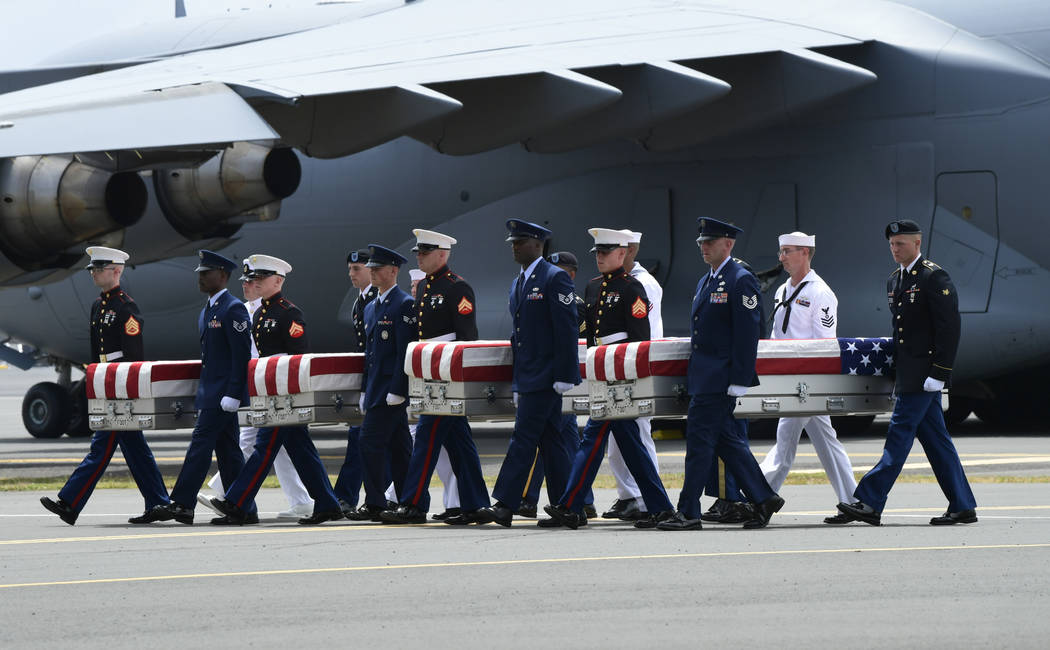
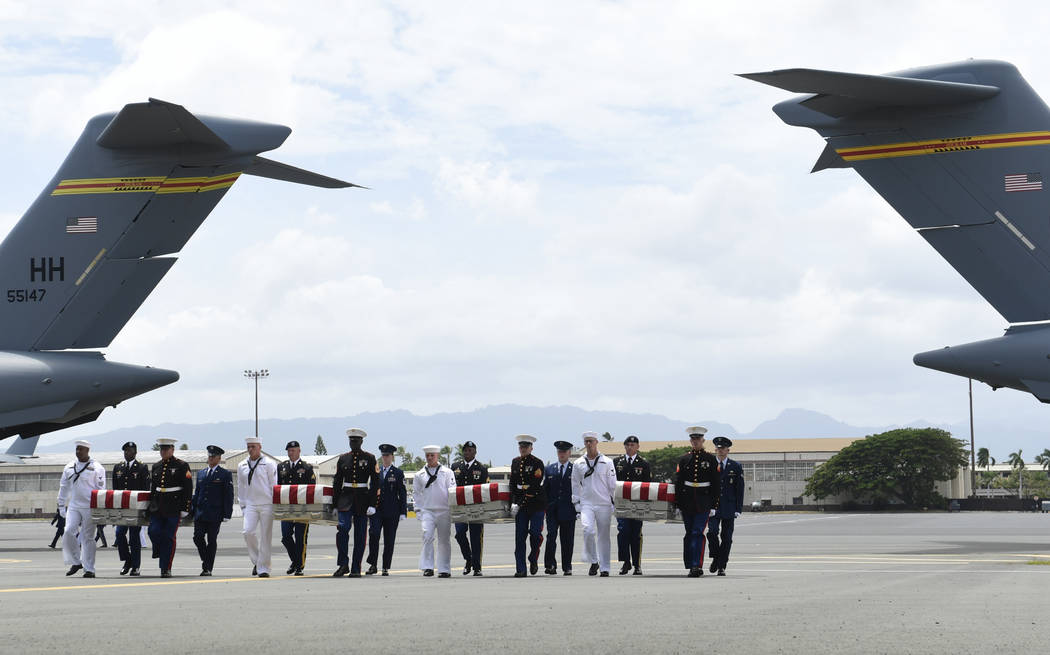
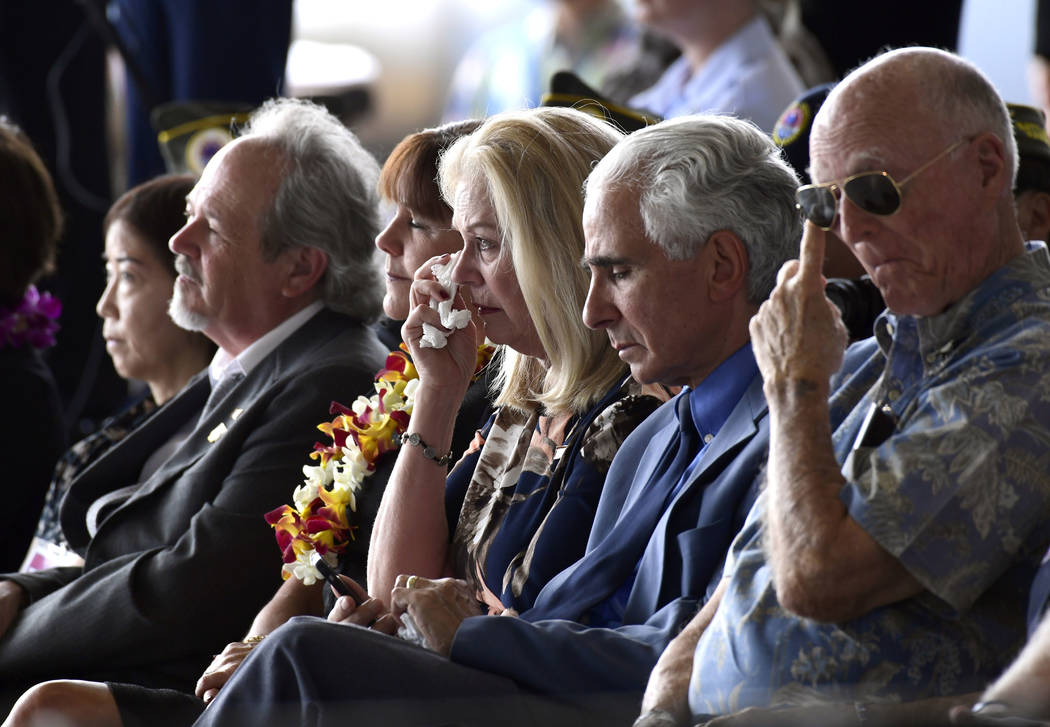
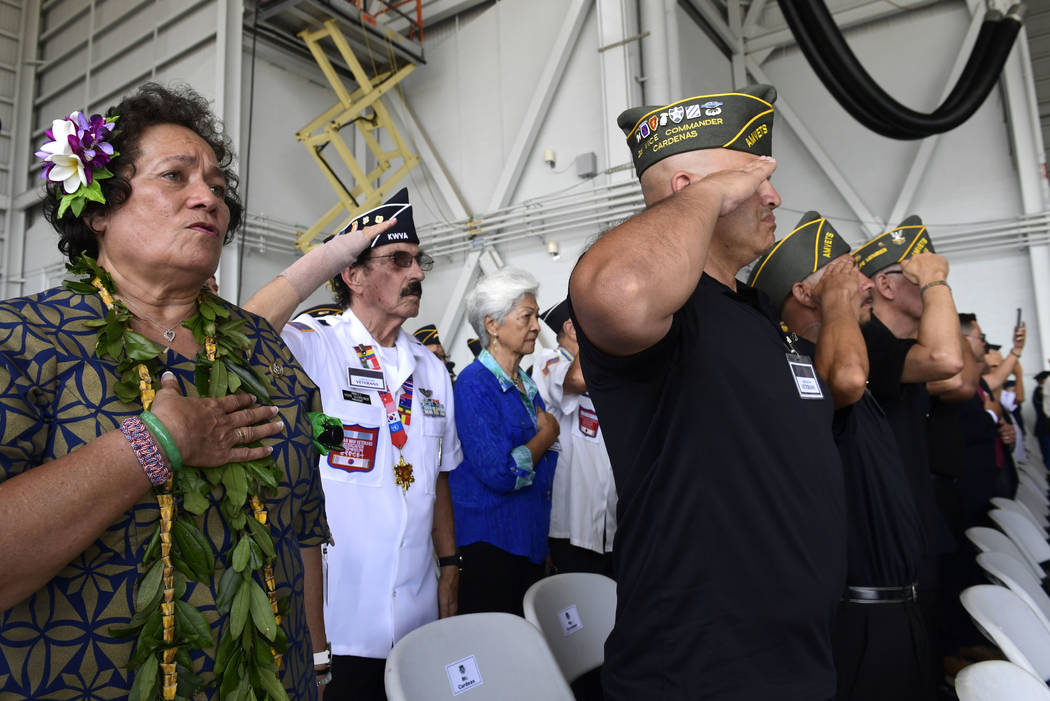

When the 55 flag-draped coffins bearing the remains of Americans who vanished during the Korean War were carried off the cargo planes by honor guards in a somber ceremony in Hawaii, Diana Brown Sanfilippo felt an almost unexplainable sense of hope.
“Seeing those containers, it just really brought the reality — those were actual bodies,” said the 70-year-old Stateline resident who joined Vice President Mike Pence at the repatriation ceremony on Aug. 1. “That was the first time I actually felt like it was really possible that my dad’s remains might come back someday.”
Sanfilippo’s father, Nevada Air National Guard 1st Lt. Frank Salazar, is one of 81 missing-in-action veterans from Nevada who served during the 20th century: five from the Korean War, six from the Vietnam War and 70 from World War II.
On Friday, National POW/MIA Recognition Day, she plans to honor her dad as well as other service members still missing.
She also wants to raise awareness about the issue, because reaching living family members can lead to a missing serviceman being identified and finally brought home.
Salazar, who volunteered for combat in 1951, vanished 66 years ago after his P-51 was hit by ground fire on a reconnaissance mission over North Korea.
He was declared dead a year later, though his remains have never been identified. It’s possible they could be among those returned recently by North Korea, but it could take years of testing by experts at Joint Base Pearl Harbor-Hickam to determine that.
He is one of more than 82,000 missing American servicemen from WWII, the Korean War, the Vietnam War, the Cold War, the Gulf wars and other conflicts.
Missing a father
Sanfilippo has few memories of her father.
She remembers being 4, and her family dropping her dad off at the airport. She wrote him letters; he wrote to her. One day, a telegram came to the house, people cried and all signs of her father were removed.
“It was like he never existed when he didn’t come back,” she said. “That was how my mom dealt with it.”
Records show her mother received a shipment of his belongings, but Sanfilippo said she never shared it with her or her brother, Scott.
“We both felt that we were lost, that we were derailed from life; we didn’t know how to get back on,” she said. “We found out later how much we shared the same grief. It was real healing for both of us.”
When Sanfilippo was a teen, she bugged her mother to show her a photo of her father. When she finally relented, Sanfilippo noticed she had her father’s eyes.
“I was impressed,” she said. “It’s like he’s really somebody. He’s a pilot.”
She went online to learn more about her father, and got into contact with a former colonel who had saved a newspaper article about her father for over 50 years.
It said Salazar had earned the nickname “Top Gun” after he hit 100 percent of the shots during a gunnery exercise at Luke Air Force Base in Arizona.
She said she got her pilot’s license to understand him better.
One day, she paid a hefty fee to take the controls of a P-51, the aircraft her father loved, at the former Stead Air Force Base in the Reno area — on the same runway he took off from time and time again.
“I felt him smiling at me,” she said. “I feel like I know my dad.”
Making identifications
A fire at the National Personnel Records Center in St. Louis in 1973 destroyed an estimated 16 million to 18 million military records — leaving researchers and the military with many holes to fill when looking to connect remains and DNA samples.
In the late ’90s, Ted Barker and his brother, Hal, started the Korean War Project to help locate families of the missing, motivated in part by the knowledge that some friends of their father, who was a rescue helicopter pilot in the Korean War, were missing and presumed dead.
Over the years, the Texas residents have located several thousand living relatives of the missing to provide DNA that could help identify their family members.
“Most people don’t even know where their loved ones were lost,” Ted Barker, also a former a Marine, said. “We help show them where.”
Sometimes, the closest living relative could be a second cousin who never even knew about the missing solider, according to Florida genealogist Megan Smolenyak.
Smolenyak, a self-proclaimed Army brat, began working for the Army in the late ’90s, helping fill in the family trees of missing personnel. Since, she has helped close 1,336 cases.
“I’m just a piece of the puzzle,” she said of the process that leads to identification when remains are recovered. “I provide the people who could provide the DNA.”
Through census, dental, marriage, birth and medical records, she can help locate some of the families.
Sometimes, if they’re lucky enough to get teeth, she said, the Army can use isotope analysis to determine where someone grew up, based on the mineral content in their bone and tooth enamel.
The effort is sometimes complicated by the fact that military records weren’t always accurate, she said, adding that “it was really easy to pretend you were someone you weren’t back in the day … or lie about your age to enlist.”
Some soldiers she has tracked were as young as 15 when they were killed, she said.
When she attends a funeral at Arlington National Cemetery, Smolenyak said, it’s special to see the final chapter to a family’s story.
‘It keeps you humble’
“There’s no such thing as a boring family,” she said. “It keeps you humble.”
Sanfilippo is hopeful that her father will one day be identified, but in the meantime she has found comfort in the military’s recognition of his sacrifice.
The first was in 1998, when the Air National Guard recognized Salazar on its 50th anniversary as the unit’s only combat fatality and presented his family with a plaque.
Then, in April, he had a memorial at Arlington National Cemetery.
“That was the ultimate,” Sanfilippo said. “He was finally honored for his service and sacrifice.”
But, she said, she still wonders how and where he died and that she has had to learn to live with an ambiguous loss.
“I don’t know that my dad died in that plane; he might have been transported, or his remains taken elsewhere,” she said. “There’s always a possibility he’ll be identified. I may die without that ever happening, but I’ll never shut that door.”
Sanfilippo keeps letters from her dad, one dated Nov. 9, 1952, telling her he would be home soon, right after Santa Claus came. He was reported missing Dec. 31, 1952.
Another, from August of that year, reads, ”I hope you haven’t forgotten me, I will be very sad if you have.”
The Defense POW/MIA Accounting Agency holds regional meetings to inform families how they can be updated on the cases of their missing in action family members. For more information, visit its website: www.dpaa.mil/Families/Family-Events/
Contact Briana Erickson at berickson@reviewjournal.com or 702-387-5244. Follow @brianarerick on Twitter.
Other Nevadan MIAs from Korean War
In addition to Frank Salazar, there are four other Nevadans still missing in action from Korea:
— Army Cpl. Robert Atha.
— Army Pfc. Eugene Harrison.
— Air Force Staff Sgt. Arthur Hoult.
— Navy Ensign Gerald Sullivan.
Source: Defense POW/MIA Accounting Agency
Two Korean War MIAs identified
President Donald Trump on Thursday identified the remains of two American servicemen who were killed during the Korean War and whose remains were returned to the U.S. by North Korea two months ago following Trump’s summit with Kim Jong Un.
Trump tweeted that the remains were those of Charles H. McDaniel, a 32-year-old Army master sergeant from Vernon, Indiana, and William H. Jones, a 19-year-old Army private from Nash County, North Carolina.
The president said: “These HEROES are home, they may Rest In Peace, and hopefully their families can have closure.”
The Pentagon also confirmed the identities.
— Associated Press













